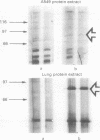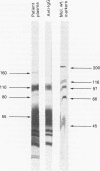Abstract
BACKGROUND--Cryptogenic fibrosing alveolitis (CFA) is believed to have an immunological pathogenesis with a persisting inflammatory reaction to an as yet unidentified pulmonary antigen(s). A high frequency of IgG autoantibodies has previously been found in the plasma of patients with CFA to an extractable 70-90 kDa lung antigen by Western blotting. Preliminary immunohistochemical studies with patient IgG had indicated that the target protein(s) might be associated with alveolar epithelial lining cells which have previously been suggested as the site of immunological attack in CFA. METHODS--In order to confirm this finding immunohistochemical analysis and Western blotting were performed on a human type II alveolar cell line (A549) using CFA patient plasma. In order to study further the distribution of the antigen, antibodies were raised in a rabbit to the partially purified 70-90 kDa CFA lung protein. RESULTS--The results showed that the human CFA autoantibody recognised a 70-90 kDa protein with a cytoplasmic distribution present in the A549 cells, confirming previous observations. The immune rabbit IgG recognised a protein of similar molecular weight by Western blotting of protein derived from lung biopsy samples of patients with CFA and A549 cells. In addition it immunoprecipitated protein(s) of this molecular weight from lung biopsy protein extracts from patients with CFA. The precipitated protein(s) were found to cross-react with the autoantibody found in the plasma of patients with CFA. Immunohistochemical analysis with immunised rabbit antibody revealed positive staining of type I and II alveolar epithelial lining cells in CFA. A similar pattern of epithelial staining was also observed with the rabbit IgG on biopsy specimens of lung from patients with sarcoidosis and control lung tissue, although this was more focal and less intense. No positive staining was seen on sections from a number of non-pulmonary tissues (colon, liver, kidney, tonsil, lymph node, skin, cervix). Cytoplasmic staining of the A549 cell line was also detected. CONCLUSIONS--The 70-90 kDa protein recognised by autoantibodies in patients with CFA is associated with pulmonary epithelial lining cells. The immune rabbit IgG produced appears to recognise antigen by Western blotting and immunohistochemical staining of lung tissue in a similar pattern to the patient autoantibodies. Immunohistochemical data obtained with this antibody suggest that the putative autoantigen against which patients with CFA mount a humoral immune response may be endogenous and specific to the lung.
Full text
PDF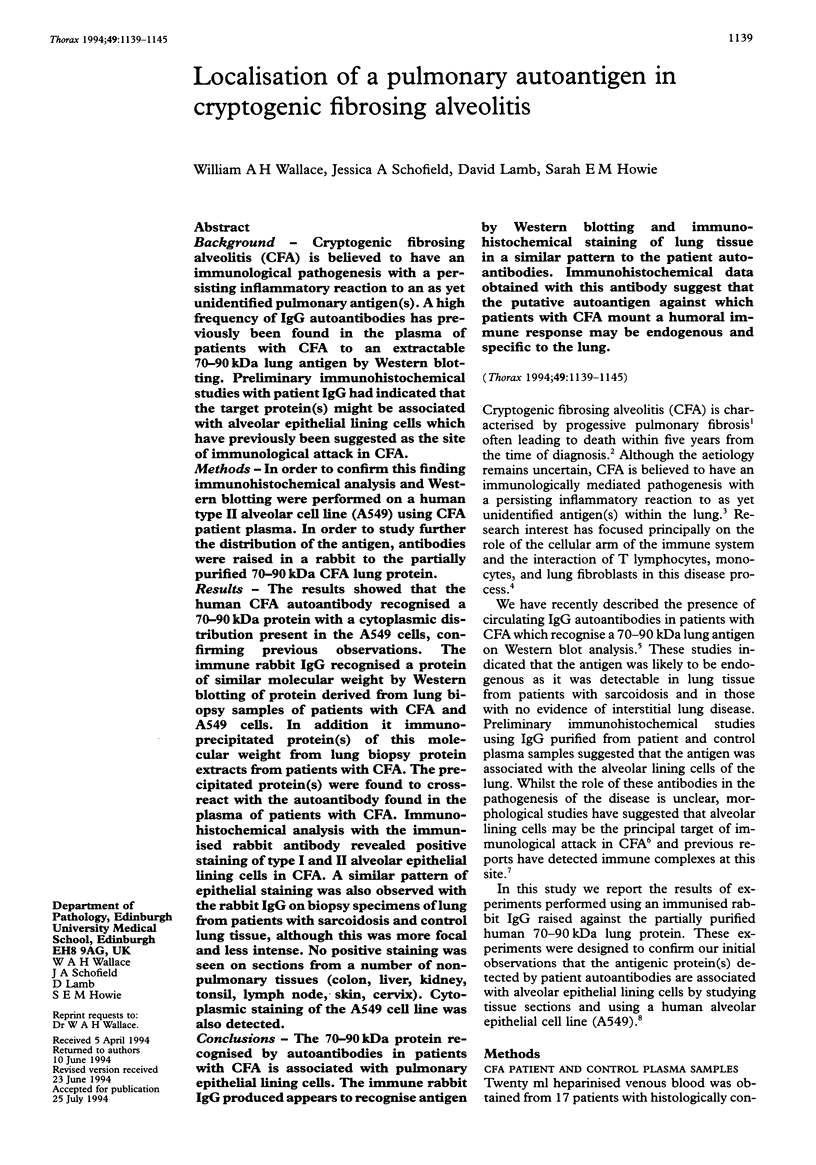

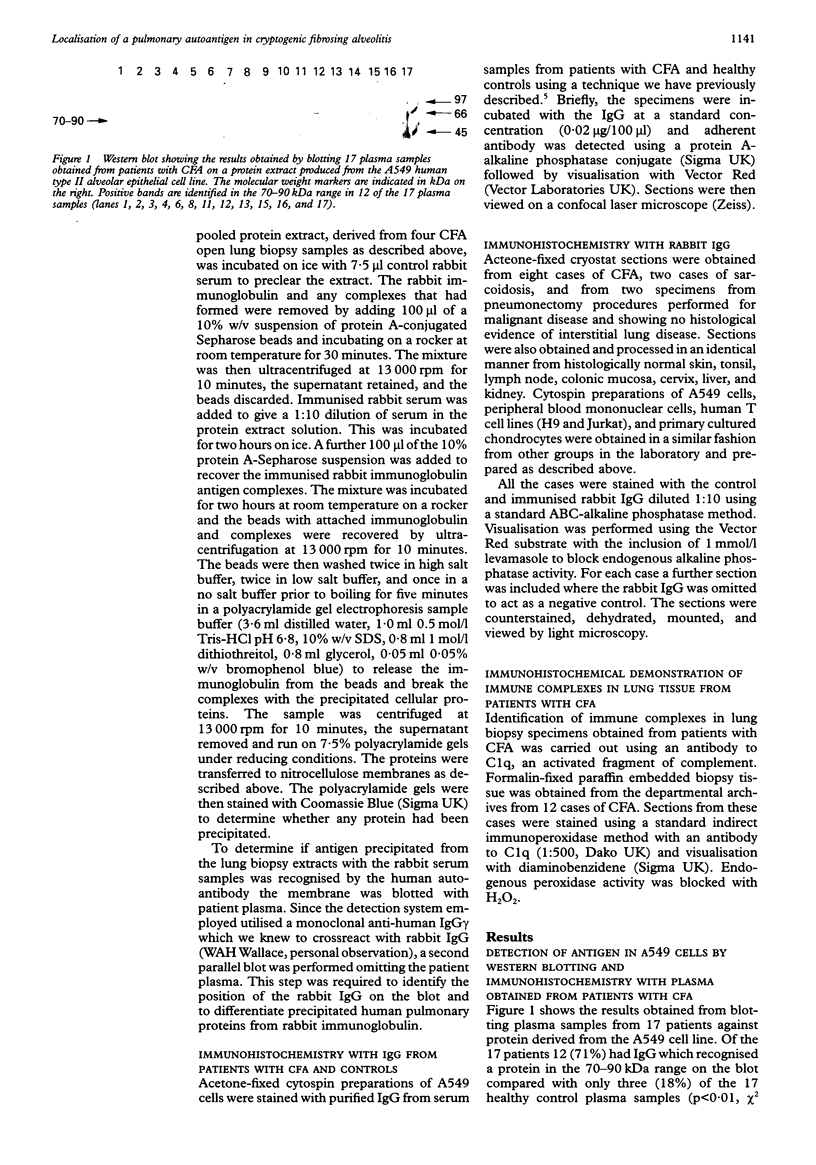
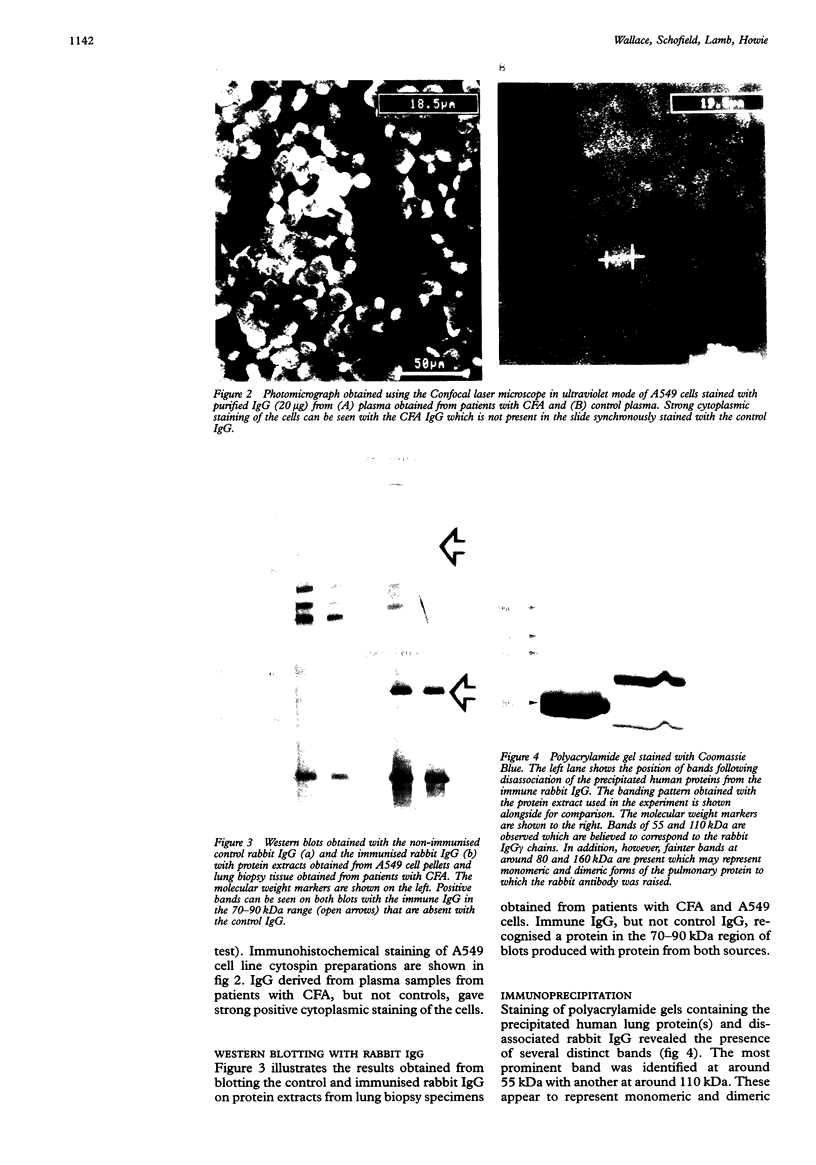
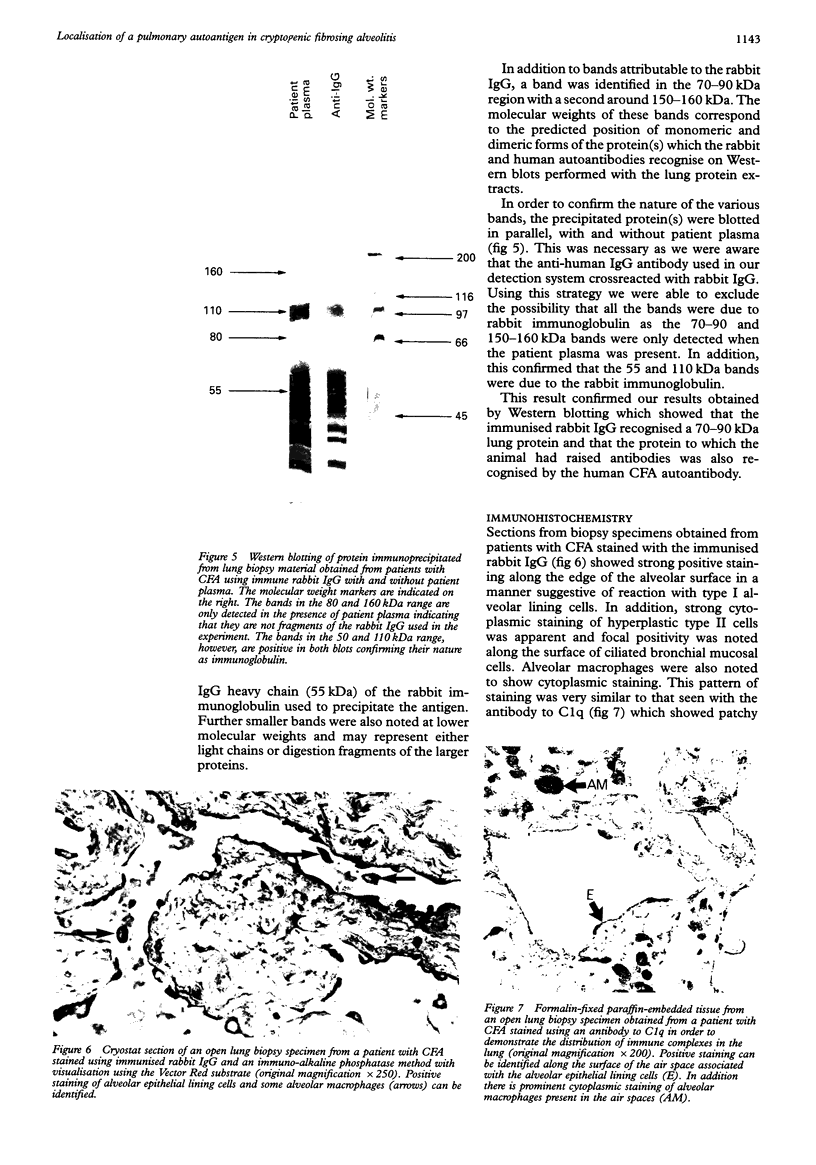
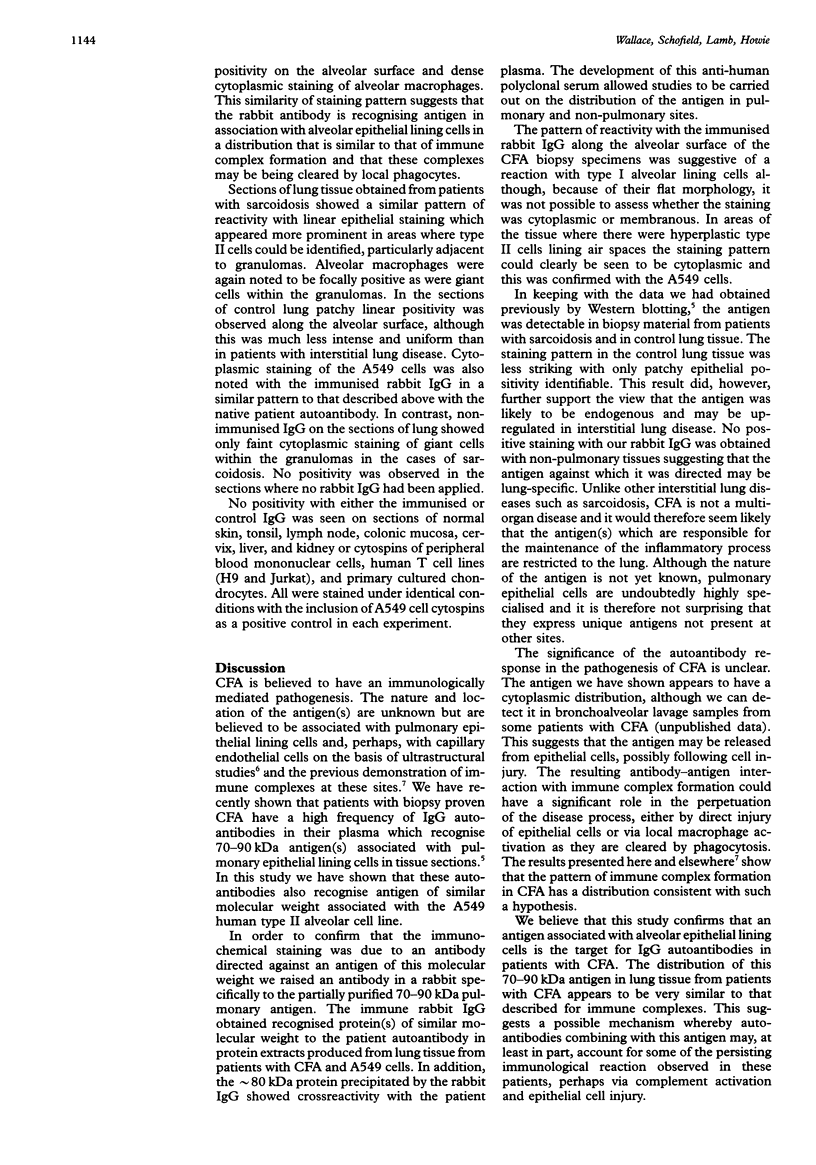
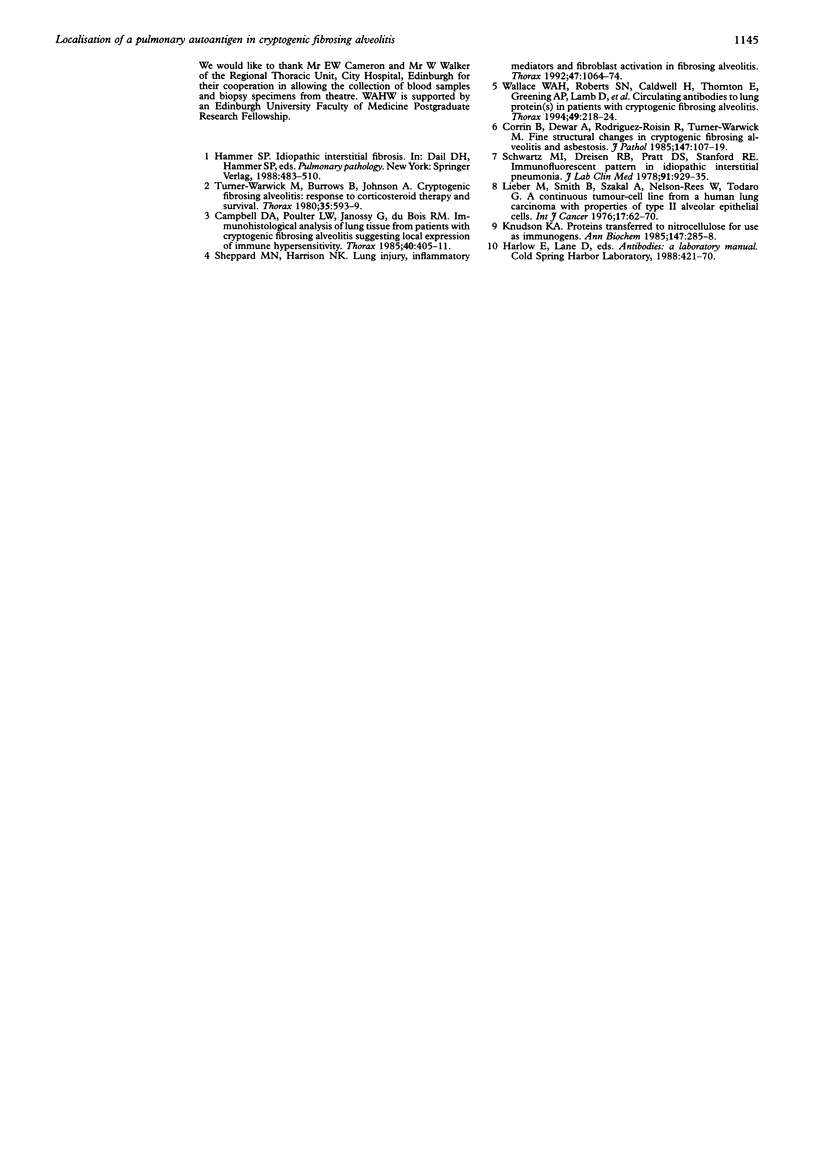
Images in this article
Selected References
These references are in PubMed. This may not be the complete list of references from this article.
- Campbell D. A., Poulter L. W., Janossy G., du Bois R. M. Immunohistological analysis of lung tissue from patients with cryptogenic fibrosing alveolitis suggesting local expression of immune hypersensitivity. Thorax. 1985 Jun;40(6):405–411. doi: 10.1136/thx.40.6.405. [DOI] [PMC free article] [PubMed] [Google Scholar]
- Corrin B., Dewar A., Rodriguez-Roisin R., Turner-Warwick M. Fine structural changes in cryptogenic fibrosing alveolitis and asbestosis. J Pathol. 1985 Oct;147(2):107–119. doi: 10.1002/path.1711470206. [DOI] [PubMed] [Google Scholar]
- Knudsen K. A. Proteins transferred to nitrocellulose for use as immunogens. Anal Biochem. 1985 Jun;147(2):285–288. doi: 10.1016/0003-2697(85)90273-8. [DOI] [PubMed] [Google Scholar]
- Lieber M., Smith B., Szakal A., Nelson-Rees W., Todaro G. A continuous tumor-cell line from a human lung carcinoma with properties of type II alveolar epithelial cells. Int J Cancer. 1976 Jan 15;17(1):62–70. doi: 10.1002/ijc.2910170110. [DOI] [PubMed] [Google Scholar]
- Schwarz M. I., Dreisin R. B., Pratt D. S., Stanford R. E. Immunofluorescent patterns in the idiopathic interstitial pneumonias. J Lab Clin Med. 1978 Jun;91(6):929–938. [PubMed] [Google Scholar]
- Sheppard M. N., Harrison N. K. New perspectives on basic mechanisms in lung disease. 1. Lung injury, inflammatory mediators, and fibroblast activation in fibrosing alveolitis. Thorax. 1992 Dec;47(12):1064–1074. doi: 10.1136/thx.47.12.1064. [DOI] [PMC free article] [PubMed] [Google Scholar]
- Turner-Warwick M., Burrows B., Johnson A. Cryptogenic fibrosing alveolitis: response to corticosteroid treatment and its effect on survival. Thorax. 1980 Aug;35(8):593–599. doi: 10.1136/thx.35.8.593. [DOI] [PMC free article] [PubMed] [Google Scholar]
- Wallace W. A., Roberts S. N., Caldwell H., Thornton E., Greening A. P., Lamb D., Howie S. E. Circulating antibodies to lung protein(s) in patients with cryptogenic fibrosing alveolitis. Thorax. 1994 Mar;49(3):218–224. doi: 10.1136/thx.49.3.218. [DOI] [PMC free article] [PubMed] [Google Scholar]





